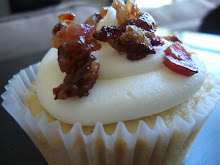Have you planned out your festival season? Art Festival season is coming quickly and deadlines for applications are looming. The economy has changed since the last season, which wasn’t a

happy indication of things to come, was it? Many artists saw a huge dip in sales, and this year, some of the big shows are taking hiatus due to lack of sponsorship and anticipated dips in sales and participation. Art in the Park (Greenville, SC) – case and point. How are you going to weather these tough times? Here are some tips for strategic planning to set yourself up for a successful festival season in 2009.
* Don’t over commit.
Booth fees and art supplies are expensive. It is better to sign up for a few bigger shows and focus on doing well, then dividing your resources over too many big shows and taking a chance. If you depend on shows for income, then this is especially important for you. Focus on those tried and true shows, and add a few small shows in your region to your schedule. Maybe try some of the one day shows or one of the local weekly or monthly art markets that have low booth fees and little time commitment. People are not spending as much money as they used to, so the likelihood of seeing a return on an out of town, high cost festival might be unrealistic. Galleries and collectors have modified their shopping habits, but have you modified your strategies to accommodate? How are you going to modify your methods to keep sales up?
* Vary your inventory. I can’t tell you how many times I have walked into an artist’s booth where nothing was under $30. This is a giant mistake that artists make across the board, and I have never understood why. I advise my clients to have three categories of work in their booths: 1) high end items, 2) middle items, 3) bread and butter items.
The chance of selling higher end items is fairly low, but there are still people with disposable income, so don’t neglect their pocketbooks! Higher end items take longer to produce, and take up more space in your car when traveling, so don’t waste valuable space in your booth or creative time with these items for festivals. (Save them for the gallery shows.) Only pack a few high end items for festivals and when designing your booth for this season, make sure they are a focal point inside your booth to draw people to your space. Think of them as signs or billboards that need prominent placement to draw attention.
Middle items are those pieces that may cost as little as $40 and as much as $250. These items are your pieces with tried and true steady sales. The majority of your booth should consist of middle items. For many artists, these items will be sales that will make your festival worth while.
I am a firm believer in Bread and Butter items. I think even the most prominent artists should have some sort of item that is affordable to the youngest of collectors. Bread and Butter items are smaller items that generally cost $30 or less (ideally $15 or less). These items, with the right display, will sell even if nothing else moves.
I’ve seen several artists who take advantage of this method. One of my favorites is Jude Stuecker. (
http://www.judestuecker.com/). Jude is a fiber artist from Asheville, NC. Her booth set up is ideal. Her bread and butter items are small fabric collage pouches. She also has middle item wall hangings, clothing and a couple of larger pieces available.
* Advertise
Never, ever leave it up to the festival to advertise for you. Always have a mailing list sign up in your festival booth to build your mailing list. Make sure you are on Facebook and keep a running blog. Don’t wait until the week of the show to start advertising, either. List your upcoming shows on your site, and send periodic updates out to the masses. Invest in postcards (include your website on them!)or a flier of your upcoming festivals which can be placed in your booth and mailed out to your list. Email your local paper’s editor and give them the scoop, especially if you have something big coming up. Are you going to be at a prestigious show or are you working on a big piece? Are you going to be in a gallery opening or in open studios? Editors are always looking for something interesting to write about. Get on their radar and make sure local editors and regional magazines are on your mailing list!
There are so many factors that must line up just perfectly for any show to go off without any hitches. But you can take some proactive measures to increase your chances of a lucrative show. One last thing: people like to connect with the artist. At shows, make sure you are interacting with the audience. If people aren’t coming into your booth, make sure they can see your smiling face. Wave. Welcome people in. Put out a bowl of suckers for the kids. Pass out postcards with upcoming show dates to adults and invite them to sign up for your email list. And if the show is a complete bust, don’t throw up your hands in disgust. Take some time to get to know the other artists, and discuss the show. Why wasn’t there an audience? What could you, as artists, do for the next show to make sure there are more people? I can never guarantee a successful show, nor can a festival organizer, but learning to take charge and making some time for strategic planning this festival season will go a long way to weathering this economic storm.
 Attn: Art Market needs Local Artists.
Attn: Art Market needs Local Artists.
